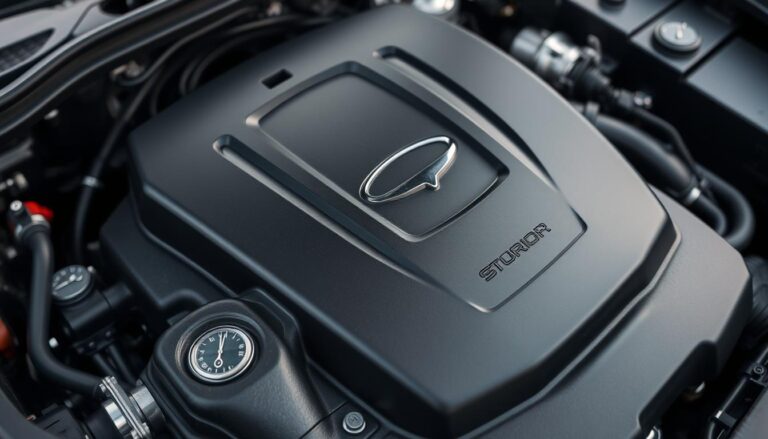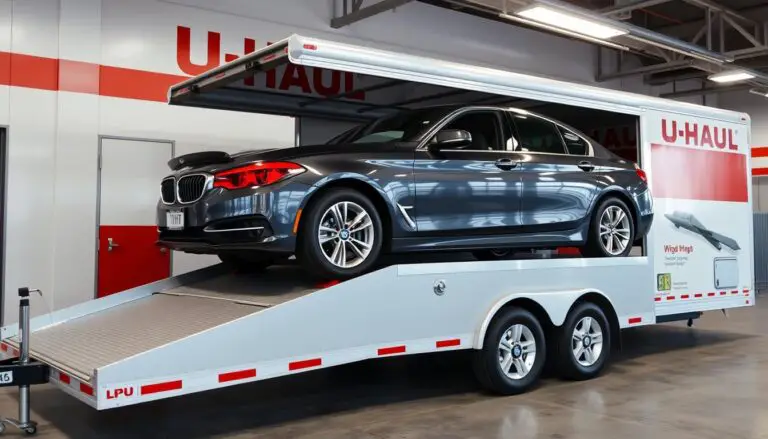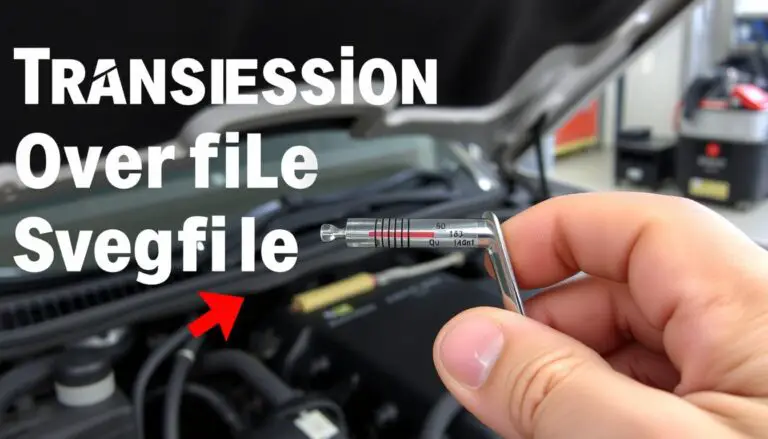Is your lawn mower giving you trouble by starting and then shutting off? This frustrating issue can hinder your lawn care routine. Understanding the causes and solutions is crucial for effective lawn mower maintenance.
Several factors could be contributing to this problem, including issues with the fuel system, ignition problems, or improper maintenance. In this article, we will explore the common reasons behind this issue and provide a comprehensive guide on lawn mower repair and lawn mower troubleshooting to get your mower running smoothly again.
Key Takeaways
- Common causes of a lawn mower that starts and then shuts off
- Troubleshooting steps for lawn mower issues
- Maintenance tips to prevent future problems
- Repair techniques for a malfunctioning lawn mower
- Best practices for lawn mower maintenance
Why Your Lawn Mower Starts but Won’t Stay Running
A lawn mower that starts but won’t stay running is a common problem many homeowners face during the mowing season. This issue can stem from various causes, making it crucial to identify the symptoms and apply the appropriate fixes.
Common Symptoms to Watch For
When a lawn mower starts but shuts off, there are usually signs that precede the stalling. These can include sputtering, a decrease in power, or the mower emitting smoke. Observing these symptoms can help in diagnosing the problem accurately.
Noting whether the issue occurs consistently or intermittently can also provide valuable insights into the cause.
Safety Precautions Before Troubleshooting
Before diving into troubleshooting, it’s essential to take necessary safety precautions. Ensure the mower is turned off and the spark plug wire is disconnected to prevent accidental starts. Wear protective gear, including gloves and safety glasses, to safeguard against potential hazards.
Tools You’ll Need for Diagnosis and Repair
Having the right tools on hand can streamline the diagnosis and repair process. Essential tools include a spark tester, fuel filter, and carburetor cleaner.
A socket set and pliers are also handy for various adjustments and repairs.
Being prepared with these tools can help you tackle the issue efficiently and effectively.
Fuel System Issues: The Most Common Culprits
When a lawn mower starts and then dies, the fuel system is often the culprit. Issues within this system can cause a range of problems, from intermittent running to complete failure to stay operational. Understanding the common culprits and how to address them is crucial for maintaining your lawn mower’s performance.
Old or Contaminated Fuel
One of the most common issues with lawn mower fuel systems is the use of old or contaminated fuel. Over time, fuel can degrade, losing its combustibility and potentially clogging the fuel system. Using fresh fuel is essential for the proper operation of your lawn mower.
How to Drain and Replace Fuel
Draining old fuel and replacing it with fresh fuel is a straightforward process. First, ensure you are in a well-ventilated area and follow proper safety precautions. Then, locate the fuel tank and drain it completely. Refill with fresh, high-quality fuel. For detailed instructions, you can refer to resources like this guide on troubleshooting lawn mower issues.
Adding Fuel Stabilizer for Prevention
To prevent fuel from degrading over time, consider adding a fuel stabilizer. Fuel stabilizers help maintain the quality of the fuel, reducing the risk of contamination and ensuring your lawn mower runs smoothly when needed.
Clogged Fuel Filter or Line
A clogged fuel filter or line is another common issue that can cause a lawn mower to stall. The fuel filter is designed to remove impurities from the fuel, but over time, it can become clogged, restricting fuel flow.
Step-by-Step Filter Replacement
Replacing a clogged fuel filter involves locating the filter, removing it, and installing a new one. Ensure you purchase a filter compatible with your lawn mower model. Regularly replacing the fuel filter can prevent many fuel system issues.
Cleaning Fuel Lines Safely
Cleaning clogged fuel lines requires care to avoid damage. Use a fuel line cleaning kit or compressed air to clear blockages. Always follow safety guidelines when working with fuel systems to avoid accidents.
Dirty Carburetor Problems
A dirty carburetor can also cause a lawn mower to start but then die. The carburetor mixes air and fuel for combustion; when it becomes clogged with debris, this process is disrupted.
Quick Carburetor Cleaning Method
Cleaning a dirty carburetor involves disassembling it, soaking the parts in a carburetor cleaner, and then reassembling it. This process can restore the carburetor’s function, allowing your lawn mower to run smoothly.
When to Rebuild or Replace the Carburetor
If cleaning the carburetor does not resolve the issue, it may be necessary to rebuild or replace it. Rebuilding involves replacing worn-out parts, while replacing involves installing a new carburetor. The choice between rebuilding and replacing depends on the extent of the damage and the cost of replacement parts.
| Issue | Symptoms | Solution |
|---|---|---|
| Old or Contaminated Fuel | Lawn mower starts but dies | Drain and replace fuel |
| Clogged Fuel Filter or Line | Intermittent running or stalling | Replace fuel filter or clean fuel line |
| Dirty Carburetor | Lawn mower starts but dies | Clean, rebuild, or replace carburetor |

As illustrated, fuel system issues are a significant cause of lawn mower malfunction. By understanding and addressing these common culprits, you can keep your lawn mower running efficiently.
“Regular maintenance of your lawn mower’s fuel system is crucial for its longevity and performance. By addressing issues promptly, you can avoid more significant problems down the line.”
Air and Ignition System Troubleshooting
The air and ignition systems play a vital role in a lawn mower’s operation, and issues here can cause stalling. When these systems fail, the mower may start but then shut off immediately.
Dirty Air Filter Causing Stalling
A dirty air filter can significantly impact your lawn mower’s performance. When the air filter becomes clogged with debris, it restricts airflow to the engine, causing it to stall.
How to Clean or Replace Your Air Filter
To clean or replace your air filter, first, locate it in your lawn mower’s manual. Gently remove it and inspect for dirt. If it’s dirty, you can either clean it with compressed air or replace it with a new one.
Maintenance Schedule for Air Filters
It’s recommended to check your air filter every 25 hours of use. Clean or replace it as needed. Regular maintenance can prevent stalling issues and prolong the life of your lawn mower.
Faulty Spark Plug Issues
A faulty spark plug can prevent your lawn mower from running smoothly. The spark plug ignites the fuel in the engine, and if it’s worn out or fouled, the engine may stall.
Testing Spark Plug Condition
To test your spark plug, remove it and inspect the electrode. If it’s worn out or covered in deposits, it’s likely faulty. You can use a spark tester to check for spark.
Proper Spark Plug Replacement Procedure
Replacing a spark plug involves removing the old plug, checking the gap on the new plug, and installing it. Make sure to tighten it securely to prevent it from coming loose during operation.
Ignition Coil and Electrical Problems
Issues with the ignition coil or electrical system can also cause stalling. The ignition coil generates the spark needed for combustion.
Diagnosing Ignition Coil Failure
To diagnose an ignition coil failure, look for signs like a weak spark or no spark at all. You can use a multimeter to test the coil’s resistance.
Testing and Replacing Electrical Components
When testing electrical components, ensure you’re using the right tools. Replace any faulty components with new ones that match the specifications in your lawn mower’s manual.
Advanced Fixes for Lawn Mower Starts but Won’t Stay Running
When a lawn mower starts but won’t stay running, it can be due to several complex issues that require advanced troubleshooting. These issues can range from overheating engine problems to safety switch malfunctions and clogged mower decks or blades. Understanding and addressing these advanced issues can help you get your lawn mower running smoothly again.
Overheating Engine Issues
An overheating engine can cause a lawn mower to shut off. This can be due to several factors, including dirty cooling fins and vents, or improper oil levels and quality.
Cleaning Cooling Fins and Vents
Cleaning the cooling fins and vents is essential to prevent overheating. Use a brush or compressed air to remove debris and ensure proper airflow.
Proper Oil Level and Quality
Maintaining the proper oil level and using high-quality oil can prevent engine overheating. Check your owner’s manual for the recommended oil type and capacity.
Safety Switch Malfunctions
Safety switches are designed to prevent accidents, but when they malfunction, they can cause the lawn mower to shut off. Understanding how to diagnose and fix these issues is crucial.
Locating and Testing Safety Switches
Locate the safety switches on your lawn mower and test them to ensure they are functioning correctly. Consult your owner’s manual for specific instructions.
Bypassing vs. Replacing Safety Switches
If a safety switch is malfunctioning, you may need to decide whether to bypass or replace it. Bypassing can be a temporary solution, but replacing is often safer and more reliable.
Clogged Mower Deck and Blade Issues
A clogged mower deck or damaged blades can cause the engine to stall. Regularly cleaning the mower deck and inspecting the blades can prevent this issue.

When to Seek Professional Help
If you’ve tried the above fixes and your lawn mower still won’t stay running, it may be time to seek professional help. A professional can diagnose complex issues and perform repairs that are beyond your expertise.
Conclusion: Keeping Your Lawn Mower Running Smoothly
To keep your lawn mower running efficiently, regular lawn mower maintenance is crucial. By following the troubleshooting steps outlined in this article, you can identify and fix issues before they become major problems.
Regularly checking and maintaining the fuel system, air filter, and spark plug can help prevent stalling and ensure a smooth operation. Additionally, keeping the mower deck clean and checking for blockages can improve performance and reduce the risk of damage.
By incorporating these simple lawn mower repair and maintenance tasks into your routine, you can extend the life of your lawn mower and ensure it continues to run smoothly throughout the season. For more complex issues, consider consulting a professional for lawn mower troubleshooting and repair.
FAQ
Why does my lawn mower start but then shut off immediately?
This issue could be due to various reasons, including old or contaminated fuel, a clogged fuel filter or line, a dirty carburetor, or a faulty spark plug. Checking and addressing these potential causes can help resolve the problem.
How do I clean or replace the air filter on my lawn mower?
To clean or replace the air filter, first, locate the air filter housing, usually found on the side of the engine or on top of the carburetor. Open the housing, and gently pull out the filter. If it’s dirty, you can clean it with compressed air or replace it with a new one. Make sure to check and clean or replace the air filter regularly according to the manufacturer’s schedule.
What are the signs of a faulty spark plug, and how do I replace it?
Signs of a faulty spark plug include a lawn mower that won’t start or stalls frequently. To replace the spark plug, first, locate the spark plug wire and pull it off. Use a spark plug socket to remove the old spark plug. Inspect the plug for wear or damage, and replace it with a new one if necessary. Make sure to gap the new spark plug according to the manufacturer’s specifications before installing it.
How do I diagnose and fix ignition coil or electrical problems?
Diagnosing ignition coil or electrical problems involves checking the spark plug wire, spark plug, and ignition coil for damage or wear. Use a multimeter to test the ignition coil’s resistance. If the coil is faulty, replace it. For other electrical issues, inspect the wiring and connections for damage or corrosion, and repair or replace as needed.
What should I do if my lawn mower’s engine is overheating?
If your lawn mower’s engine is overheating, check the cooling fins and vents for debris and clean them out. Ensure the oil level is at the recommended level and use the correct type of oil. If the problem persists, consider seeking professional help to diagnose and repair any underlying issues.
How do I know if I need to seek professional help for my lawn mower?
If you’ve tried troubleshooting and repairing your lawn mower based on the common issues discussed, but it still doesn’t stay running, it may be time to seek professional help. Additionally, if you’re unsure about how to perform certain repairs or if you notice complex problems like engine damage, consulting a professional is recommended.
What maintenance tasks can I perform to prevent my lawn mower from shutting off?
Regular maintenance tasks include checking and replacing the air filter, spark plug, and fuel filter as needed, using fresh fuel, and keeping the mower deck and blades clean. Regularly checking the oil level and using the correct type of oil can also help prevent issues.


